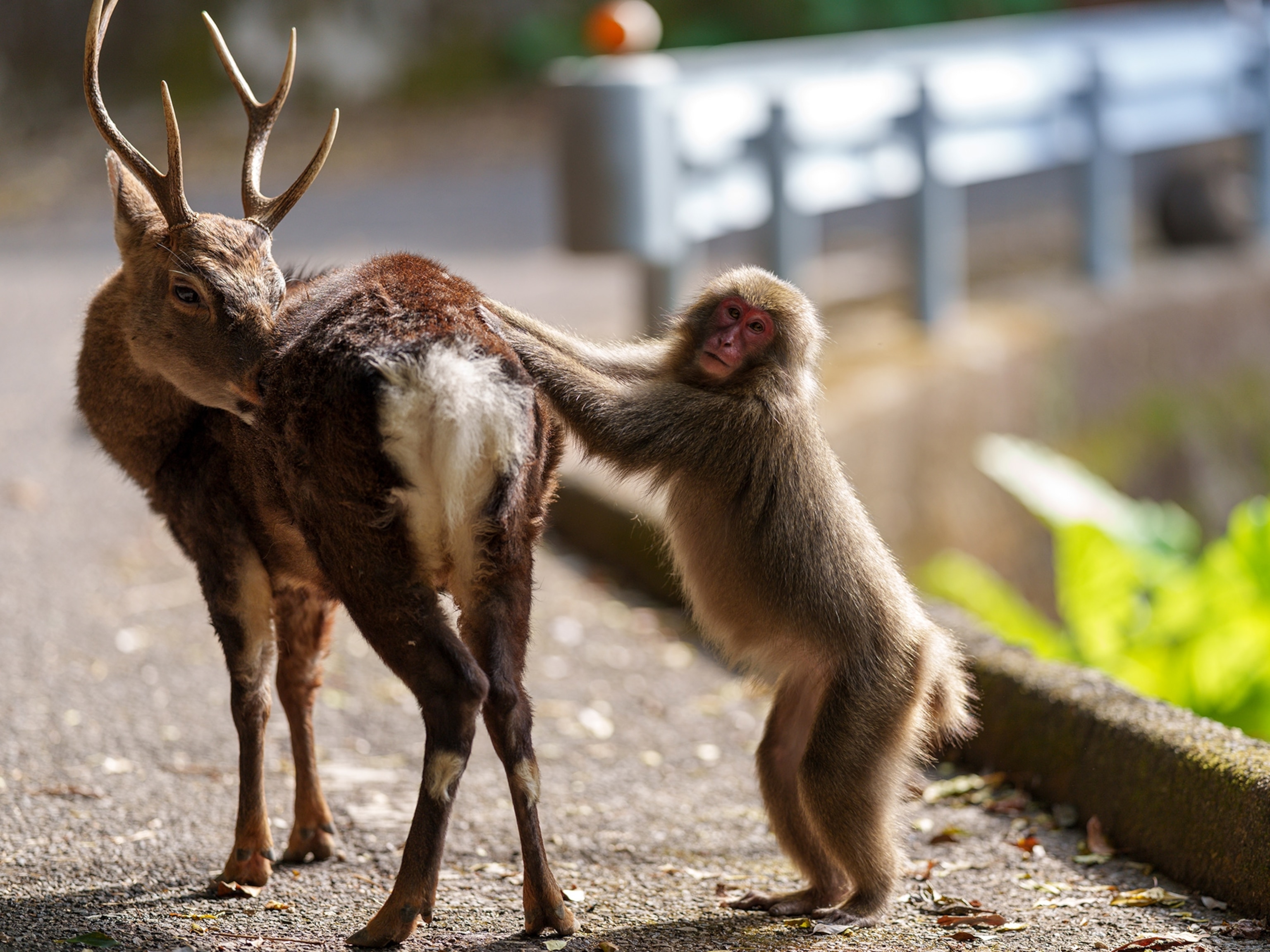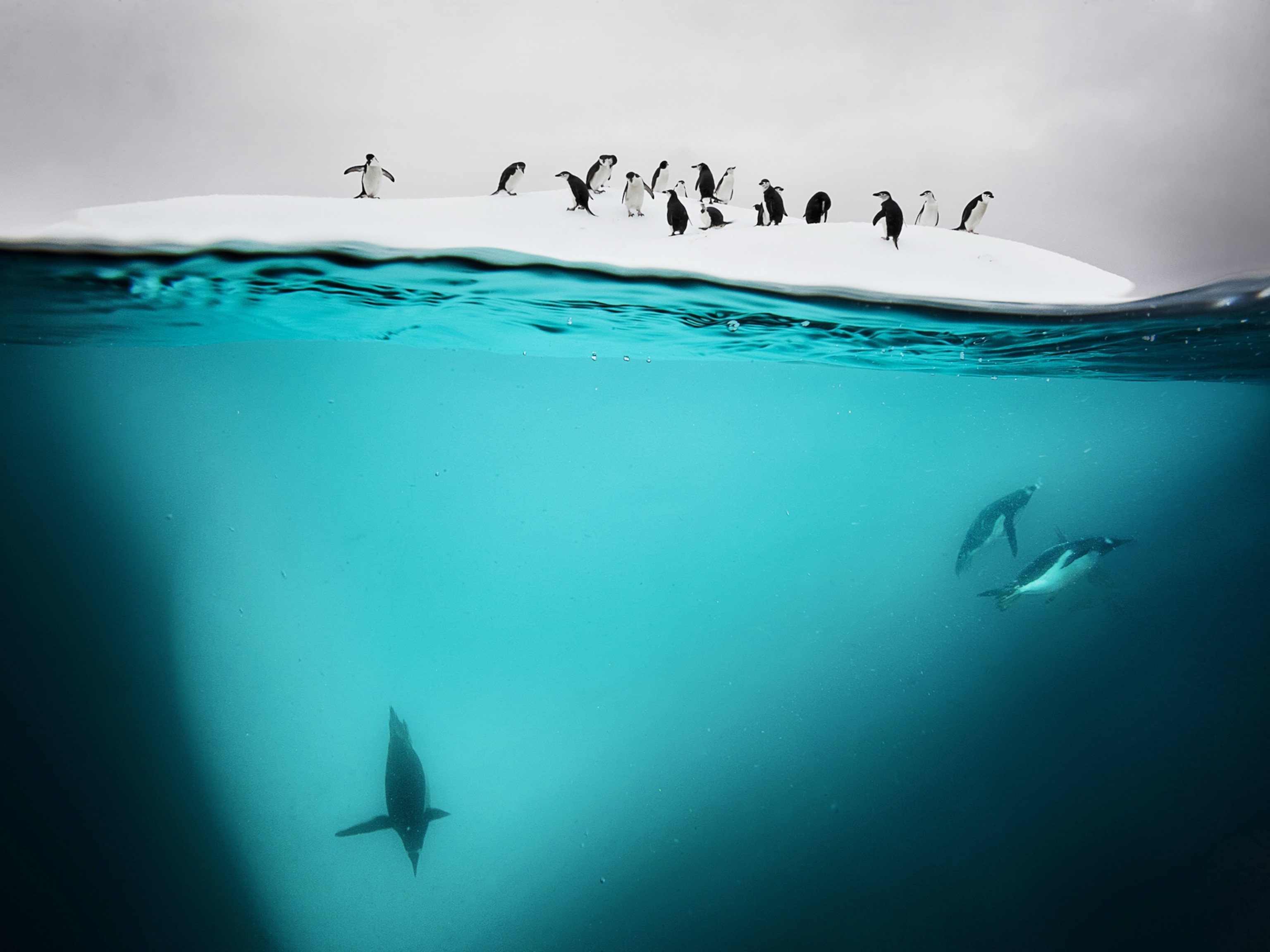
Why these seabirds stage a rowdy springtime love-in
Crested auklets crowd together and snag mates with flashing feather crests, hooting calls, and the scent of tangerines.
For 36 years, biologist Ian Jones has been studying the crested auklet (Aethia cristatella). The small seabirds flock in ocean waters between Siberia and Alaska. They nest in colonies on rocky coasts of remote islands. And each spring, they hold courtship displays that resemble rowdy, carnal swim parties. Jones, a professor at Memorial University in Newfoundland, has observed the birds’ eight-week breeding season: the sights, sounds, smells, and moves. In sum, he says, “it looks like some sort of 1960s-style love-in.”
When the snowmelt signals spring, crested auklet males of breeding age choose a courtship staging spot, and the flaunting begins. The males puff up their feathers, strut around, and flash their forward-curving crest (its size does matter to females, research has shown). They also make trumpeting, hooting, and yapping sounds “like the barking of small dogs,” Jones says.
If a female likes a male’s show, she approaches him. If there’s mutual interest, both birds pose and vocalize, and stroke each other with their bills. That distributes a tangerine-scented substance released from a gland beneath their nape feathers. The smell may be an auklet turn-on—and the bird is already “extremely gregarious,” Jones says. “You can have a one-meter-square flat rock with hundreds of birds on it, jostling, crowding, and doing all sorts of weird things.”
A couple’s wooing usually leads to intertwining of necks, then mating—but never on dry land, Jones says. “They do it frequently. Several times in an hour. And always at sea.” Not always alone, however: Sometimes a “scrum” of other auklets tries to thwart or cut in on the sex, until the male backs them off with jabs of his bill.
In a single season the mates produce one egg, co-parent during the chick’s early months, and often remain a pair. The next year, the same birds may find each other and do it all again.





